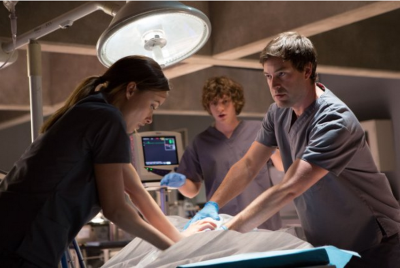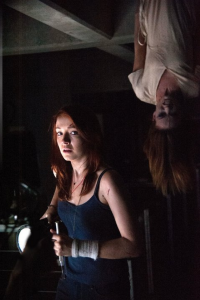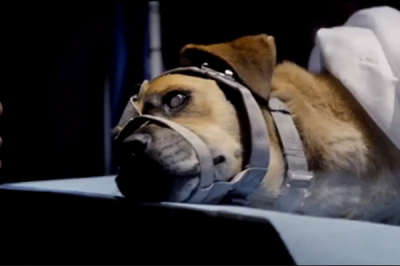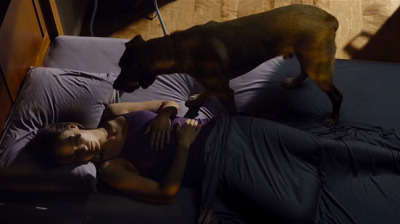It was W.C. Fields who once said, “Never work with children or animals.” (Actually, it probably wasn’t as much the kids as the stage mothers, but that’s another story.) But what about working with dogs, demons and Mark Duplass? In the latest horror entry from Blumhouse Productions, “The Lazarus Effect” which is premised upon the debate between religion and science on the issue of raising the dead, producer Jason Blum and director David Gelb do just that, and to chilling result.
Mark Duplass has been a familiar face and name both in front of and behind the camera in the indie film world for more than a decade. In addition to his acting skills, which are on display in “The Lazarus Effect” as he steps into the “horror” genre for the first time, Duplass is an award winning writer, producer and director, all skills which were “no joke” to producer Jason Blum. According to Blum, “To have someone who wears a directing and producing hat, acting in a movie, is like heaven for a producer because he totally understands the problem of production. . .It’s been a massive asset. We’ve done three movies together and he’s a huge asset on the production side because he “gets” the issues. He’s my hero.” For director David Gelb, making his freshman feature film debut following his award-winning success with the documentary ‘Jiro Dreams of Sushi’, “being able to lean on everyone” and having Duplass on hand was “most reassuring”. Gelb readily admits that he would find himself after shooting certain scenes turn to Duplass for advice, often asking, “Did I get enough coverage? Should I reposition the camera? Should we do another take?” Duplass provided a welcome level of comfort and confidence to Gelb, as for Duplass, it was all about making this “visually slick horror film” that had the “potential to maybe be something unique.”
Dealing with demons and the beyond came a bit easier than expected to Gelb thanks to his cinematographer Michael Fimognari and the approach to the film as a whole. “We had a great opportunity to take a space that our characters were contained in and then kind of have the lighting changing as the movie goes on, things are getting darker and more destroyed and broken apart. I think a kind of key element to a film like this is the fact [the characters] can’t just leave, they’re trapped there, and they have to deal with the problem and deal with each other. So, as the film goes on, visually you kind of find ways to make it feel like there’s a real progression happening.
And what of the film’s favorite canine, Rocky the Dog, named, of course, for cinematic underdog Rocky Balboa? Played by Cato, according to director Gelb, “We had an awesome dog. . .One of the best parts of the pre-production was auditioning the dogs. We had all these terrific dogs and Cato kinda just stood out. He’s got these incredible eyebrows. He’s alternately cute and can be scary at the same time. But, it was a challenge [working with him].”
Giving Gelb props for his staging and direction of Cato, Duplass is quick to note, “It is a challenge [working with animals]. When you’re casting, a lot of times when you’re casting a human role, you’re thinking, “This person has to be an asshole in the movie. Should I cast an asshole just to be an asshole? Or should I cast a nice person and direct them to be an asshole?” Likewise with dogs, you kinda want a nice obedient dog to deal with but at the same time, that dog has to be scary when it comes on set. In the case of Cato, David was really put through the ringer. We had a really nice sweet dog and Cato was really not scary [laughing]. So we really had to figure out how to light it and how to get everything right. That may be [Gelb’s] most successfully directed performance! [He] worked [his] ass off!”
















